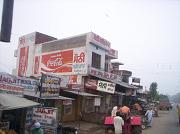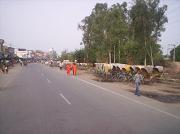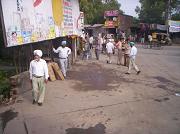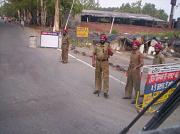
|
You are on the page: Home page ➤ Photo galleries of India ➤
|
 |
 |
20000 photos of India, 1280õ960
Punjab photos
|
Amritsar |




Punjab, the birthplace of Sikhism, a religion that sought to amalgamate the best of Hindu and some other traditions, is the most prosperous state of the country. While Western scholarship generally places Sikhism as arising primarily within a Hindu Bhakti movement milieu while recognizing some Sufi Islamic influences, Indian Sikh scholars disagree and state that Sikhism transcended the environment it emerged from. Punjabis are a hard working, fun loving, friendly and demonstrative people whose hospitality is legendary, and author of this site scriptures.ru can also confirm it. Largest recruitment to the armed forces is from the Punjab. Agriculture is the main stay of Punjab’s economy. Punjabi is an Indo-Aryan language spoken by over 100 million native speakers worldwide, ranking as the 10th most widely spoken language (2015) in the world. It is the native language of the Punjabi people, who associate with the historical Punjab region of India and Pakistan. Among Indo-European languages, it is unusual in having lexical tone. Punjabi is the most widely spoken language in Pakistan, the 11th most widely spoken in India, and the third most-spoken native language in the Indian Subcontinent. Punjabi is the fourth most-spoken language in the United Kingdom, and the fifth most-spoken native language (after English, French, Mandarin and Cantonese) in Canada. It also has a significant presence in the United Arab Emirates, United States and Australia. The Punjab is one of the relatively few regions in the world with a situation of digraphia (more than one writing system for the same language); Punjabi is written in both the Shahmukhi (similar to Devanagari) and the Gurmukhi (similar to Arabic alphabet) scripts; the former mainly by Muslims, the latter mainly by Sikhs and Hindus. |
|
Punjab shares its capital, Chandigarh (a Union territory), with Haryana. Among the historical sites are the archaeological sites of Rupnagar, and Sanghol have yielded stone artefacts of the Kushan period. Ancient forts, palaces, and monuments can be seen at Bathinda, Faridkot, Phillaur, Kapurthala, and Shahpur. Patiala with its fort, palaces, and gardens. Among the religious sites of Punjab the main one is the Golden Temple of the Sikhs in Amritsar (“pool of nectar”) city, built in the centre of a 400-year-old pool. Jallianwala Bagh, the scene of massacre of unarmed civilians by the British army in 1919 that marked a momentous turn in the freedom movement, is situated here. The Gurudwara trail covers — Tarn Taran built in the mughal style; Goindwal Samadhi of the second Guru, Angad Dev; Anandpur Sahib, one of the four holiest Sikh Shrines; the Fatehgarh Sahib at Sirhind built to commemorate the martyrdom of the two young sons of Guru Gobind Singh; and Dera Baba Nanak, Kiratpur, Sultanpur, and Sangrur. Ram Tirth is believed to be the site of Sage Valmiki’s Ashram; Dholbaha has an ancient Hindu temple complex. Sirhind — Sikh and Muslim Shrines. Nature sights are Bhakra dam, holiday resort of Neelon, Pathankot and Sirhind, a typical Mughal Garden. Wildlife sanctuaries and national parks are: Bir Moti Bagh. Ludhiana city has small scale industry. |
|
|